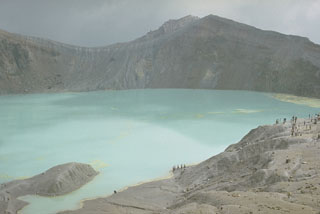Report on Kusatsu-Shiranesan (Japan) — 28 February-6 March 2018
Smithsonian Institution / US Geological Survey
Weekly Volcanic Activity Report, 28 February-6 March 2018
Managing Editor: Sally Sennert.
Please cite this report as:
Global Volcanism Program, 2018. Report on Kusatsu-Shiranesan (Japan) (Sennert, S, ed.). Weekly Volcanic Activity Report, 28 February-6 March 2018. Smithsonian Institution and US Geological Survey.
Kusatsu-Shiranesan
Japan
36.618°N, 138.528°E; summit elev. 2165 m
All times are local (unless otherwise noted)
JMA reported that during 26 February-5 March the number of volcanic earthquakes recorded at the Kusatsu-Shiranesan complex remained elevated. The Alert Level remained at 3 (on a 5-level scale).
Geological Summary. The Kusatsu-Shiranesan complex, located immediately north of Asama volcano, consists of a series of overlapping pyroclastic cones and three crater lakes. The andesitic-to-dacitic volcano was formed in three eruptive stages beginning in the early to mid-Pleistocene. The Pleistocene Oshi pyroclastic flow produced extensive welded tuffs and non-welded pumice that covers much of the E, S, and SW flanks. The latest eruptive stage began about 14,000 years ago. Historical eruptions have consisted of phreatic explosions from the acidic crater lakes or their margins. Fumaroles and hot springs that dot the flanks have strongly acidified many rivers draining from the volcano. The crater was the site of active sulfur mining for many years during the 19th and 20th centuries.

